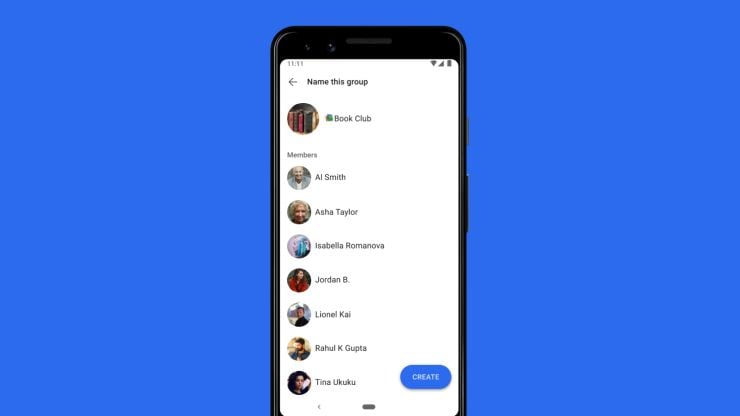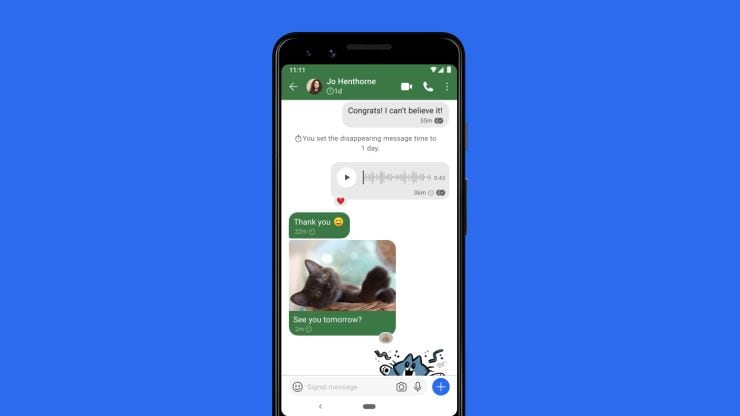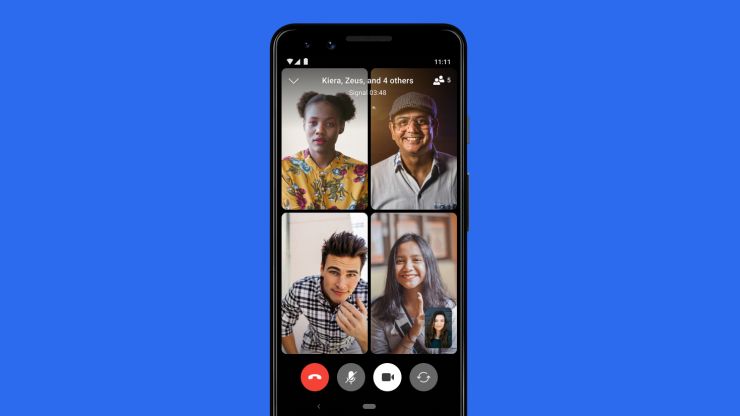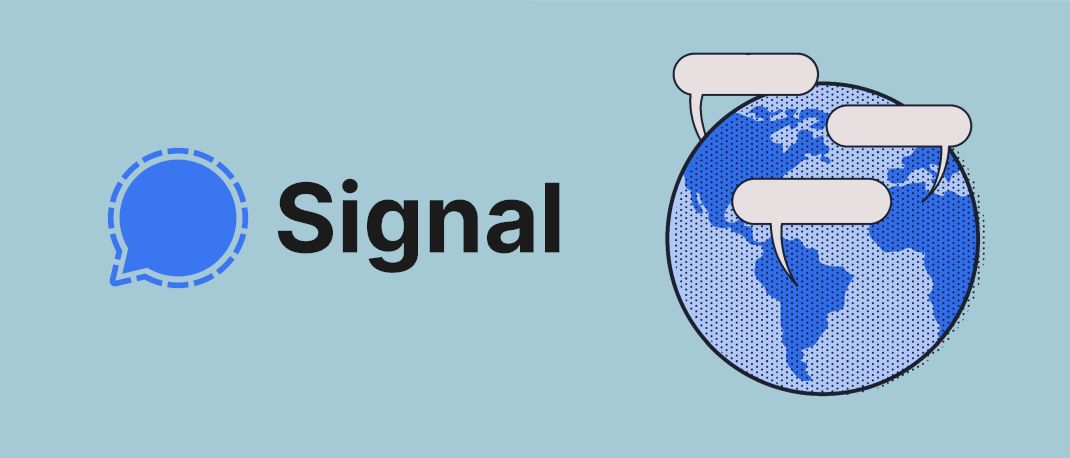WhatsApp has been a predominant messaging service around the world and more so in countries like India. There have been some developments surrounding data privacy recently that makes make many look at alternatives. There are plenty of them if you look carefully, but one of the most prominent ones is Signal. Large technology discussion communities have put up polls, asking users which messaging service they are likely to switch to. The unanimous answer has been Signal.
Messaging services are only as successful as their user base. Most of us need our friends and family to be on it, to be able to use it. Here is a quick run-through of how easy it is to get started with Signal. You can share this with your friends, family, and help them get onboard.
Signal is entirely free, and completely secured, for group chats and private messages. It is available for platforms ranging from Windows, Linux to MacOS, iOS as well as Android. First, download the app for your smartphone.
Setting up your Signal account
It is important to setup an account using your smartphone first, before linking your desktops and laptops. The registration is done by first entering your mobile number after which you should receive an OTP, that gets automatically entered. You then choose a PIN that can be used to access your account. Enter your name and last name. That is it! You should be online on Signal.
Signal offers you more secure ways to logging into your account in the future. You can choose to use them. That way, you will be required to enter the PIN you just entered to register, if you try to re-register an account with your phone number again. You can also change your PIN at any point of time. This stops anyone else from creating an account with your phone number.
Linking other devices to your Signal account
Signal can also be used on a variety of other operating systems. You can download clients for Windows, Mac OS and Linux from www.signal.org/download/. Once installed, start the software and a QR code will show up on the PC or laptop. On the phone, click on the left top (profile) icon and then on Linked devices. This menu is where you can find all the settings for Signal on your phone. All previously linked devices should be displayed here. Click on the icon on the right-bottom ( + ) icon to add a new device. Use the phone to scan the QR code displayed on the PC or laptop and Signal should log in. All your contacts and groups you are part of, will be displayed there in moments. You can also use the desktop client for voice and video calls.
Creating groups in Signal
 Signal supports groups and you can add people just as easily. Simply click on the new message icon on the right bottom of the Signal window. Tap New group and add people from your contact list to it. There are many more settings that then appear. The most important one is being able to share the group’s invite link with others. Tap on the group’s name on the top and then on the Group link option. Turn it on and you should see a link that you can share with others on any medium of your choice. You can also choose to have administrators approve entry to members, even if they enter using an invite link. That way, you can moderate who joins the group.
Signal supports groups and you can add people just as easily. Simply click on the new message icon on the right bottom of the Signal window. Tap New group and add people from your contact list to it. There are many more settings that then appear. The most important one is being able to share the group’s invite link with others. Tap on the group’s name on the top and then on the Group link option. Turn it on and you should see a link that you can share with others on any medium of your choice. You can also choose to have administrators approve entry to members, even if they enter using an invite link. That way, you can moderate who joins the group.
All about group permissions
 One of the most interesting things about Signal is its disappearing messages. It lets you set the entire group to never store messages. Messages posted on a group can automatically disappear as quickly as 5 seconds. You can choose to set the timer as high as a week as well. The option can be found in the right top menu button, under Disappearing Messages. As with WhatsApp, you can also pin specific groups directly to the home screen on your smartphone. Tap the menu button on the right-top and then on ‘Add to home screen’.
One of the most interesting things about Signal is its disappearing messages. It lets you set the entire group to never store messages. Messages posted on a group can automatically disappear as quickly as 5 seconds. You can choose to set the timer as high as a week as well. The option can be found in the right top menu button, under Disappearing Messages. As with WhatsApp, you can also pin specific groups directly to the home screen on your smartphone. Tap the menu button on the right-top and then on ‘Add to home screen’.
Group video and audio calling
 Telegram, another messaging service recently added the feature of being able to enable voice calls within groups. Signal already has this feature. It is available on the PC and the mobile apps/ Video calls can be enabled at any moment by tapping the video call button on the top. You will be prompted whether you want to turn on the video camera or just make a voice call. What’s more, you can use another device with the same account to join the call at any point.
Telegram, another messaging service recently added the feature of being able to enable voice calls within groups. Signal already has this feature. It is available on the PC and the mobile apps/ Video calls can be enabled at any moment by tapping the video call button on the top. You will be prompted whether you want to turn on the video camera or just make a voice call. What’s more, you can use another device with the same account to join the call at any point.
Adding stickers to Signal
 Telegram and WhatsApp have made emoticons and stickers a must-have feature for any messaging service. Signal doesn’t seem to emphasize stickers, but the feature exists. The feature exists on Signal, and you can access sticker in any conversation by tapping the emoji icon on the left of the text entry box. There is a stickers tab that holds all the stickers. You can also download additional stickers from online libraries such as signalstickers.com. Open it in a web browser and you will be able to import the sticker pack of your choice by simply tapping on one.
Telegram and WhatsApp have made emoticons and stickers a must-have feature for any messaging service. Signal doesn’t seem to emphasize stickers, but the feature exists. The feature exists on Signal, and you can access sticker in any conversation by tapping the emoji icon on the left of the text entry box. There is a stickers tab that holds all the stickers. You can also download additional stickers from online libraries such as signalstickers.com. Open it in a web browser and you will be able to import the sticker pack of your choice by simply tapping on one.
Backing up messages offline, securely
Signal respects your privacy so you get the option of even storing messages and group conversations offline on your phone. You can turn this feature on from the Settings menu. Tap on ‘Chats and Media’, then on ‘Chat backups’. Tap on ‘Turn on’ and you will be prompted to choose a folder where you want the media and chats to be backed up. You will be prompted with a passphrase that you need to remember. This is very important since you will not be able to restore your backups without that passphrase. It also means, the chat logs are stored so securely and no one will be able to access them.
That was our quick run-through of Signal. We hope you, your friends and family give it a try. If you want to consider other messaging services, besides Signal, don’t forget to check out our article on secure messaging services. If you want to learn more about nifty new services and software, keep visiting RelianceDigital.in.



